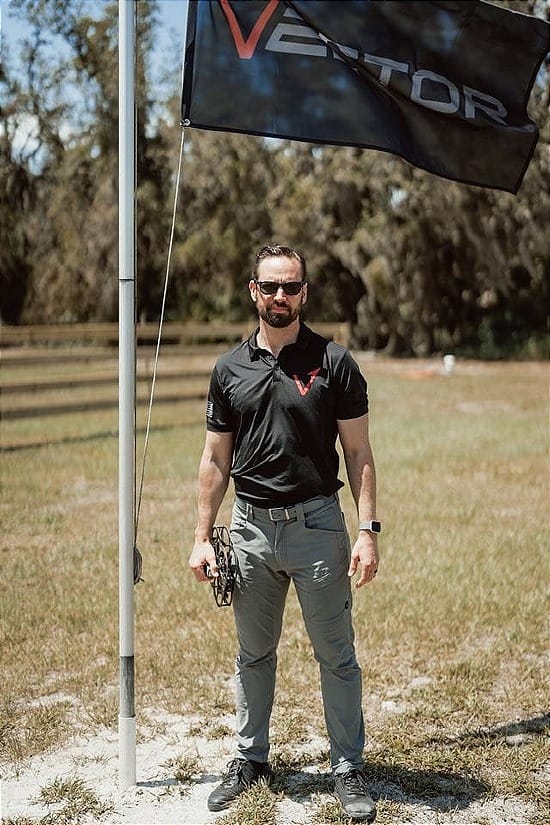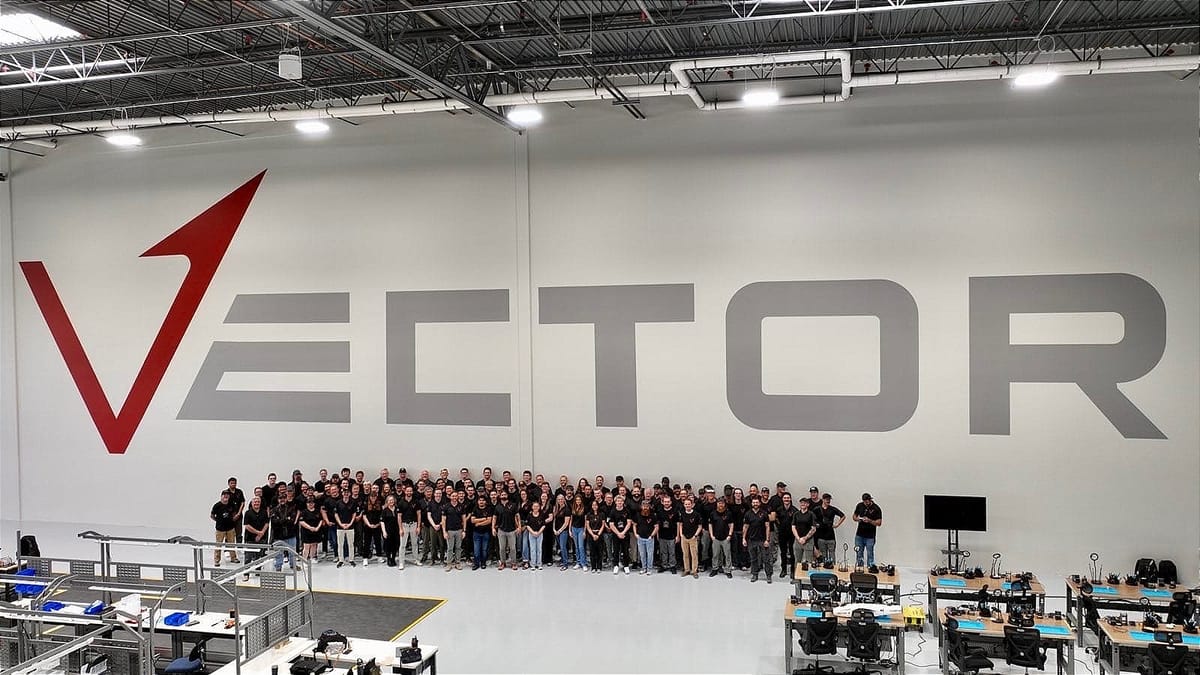

Draper, Utah — October 24, 2025
Former Army aviator Andy Yakulis leads Vector’s mission to deliver drones “at the speed of the modern battlefield.”
Utah’s defense innovation scene continues to gain altitude. Vector, a recently-founded and fast-growing drone manufacturer headquartered in Draper, UT, has secured a multi-year, multi-million-dollar contract with U.S. Special Operations Command (SOCOM). The award marks a major validation for the company’s “drone-as-a-service” model and its push to get cutting-edge technology into the hands of warfighters faster.
Founded in 2024 by CEO and Co-Founder Andy Yakulis, a West Point graduate, Army Special Operations veteran, and Stanford-trained technologist, Vector builds and operates attritable drones — low-cost, high-impact aircraft designed for frontline use and rapid iteration. Yakulis says Vector’s mission is “to streamline technology to the military,” adding, “We’re taking lessons from modern battlefields like Ukraine and bringing that speed of innovation directly to U.S. forces.”
From West Point to Vector
Yakulis entered the U.S. Military Academy shortly after 9/11 and spent nearly two decades as an aviation officer and Special Operations pilot, flying the OH-58D Kiowa Warrior helicopter on multiple deployments to Iraq. “I was the recipient of a lot of poor military technology,” he said. “I’d look at my iPhone and wonder why the tech in my pocket was better than what I had in my helicopter.”
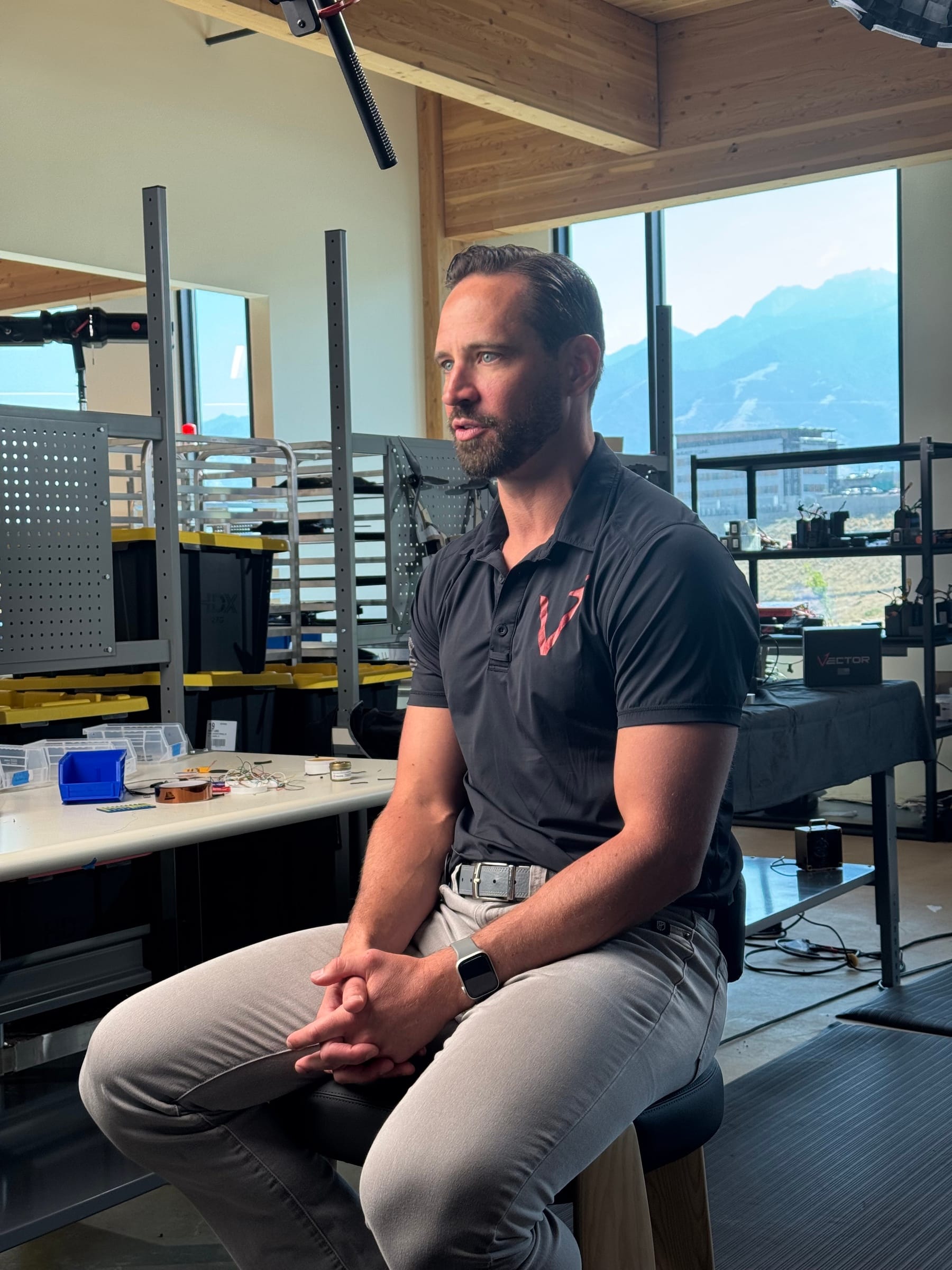
After earning a graduate degree from Stanford, Yakulis helped lead modernization initiatives at Army Futures Command and later served as the Army’s representative to the Pentagon’s Office of Strategic Capital, a new initiative designed to channel private investment into defense innovation. He left the Army at year 18 — just shy of retirement — to launch Vector. “The time to move faster was now,” he said.
The SOCOM Partnership
Under the multi-year agreement announced earlier this year, Vector will deliver drones, critical integration, and broader capability delivery “at the speed of the modern battlefield” for Special Operations forces. The contract cements Vector’s status as what SOCOM described as a “chosen capability provider for America’s most elite warfighters.”
Yakulis called the SOCOM deal “a significant endorsement,” adding, “SOCOM’s operators move fast — they expect systems that evolve as quickly as the fight itself. That’s exactly what our model delivers.”
The award follows Vector’s rapid growth and $61 million in venture capital raised from Utah investors including Pelion Venture Partners, Run Capital, Kickstart Fund, and Dauntless Capital.
Drones as a Service
Vector’s approach is what Yakulis calls “Modern Warfare as a Service.” Rather than selling drones as static products, the company offers a subscription-based model that allows the military to access, upgrade, and replace drones without waiting for traditional procurement cycles that can take years. “If you sell a drone as a service, you can iterate much faster,” Yakulis explained. “The attritable nature of these systems — drones that are expendable by design — means we can refresh and improve every generation.”
Vector’s drones are intentionally attritable, allowing the military to deploy large numbers of low-cost drones against higher-value targets without worrying about losing expensive equipment. “The economics of warfare have been flipped on their head,” Yakulis said. “In Ukraine, a $1,000 drone plus munition can destroy a $10 million tank. Even if one or two don’t hit, the price point is low enough that mass deployment achieves the mission.”
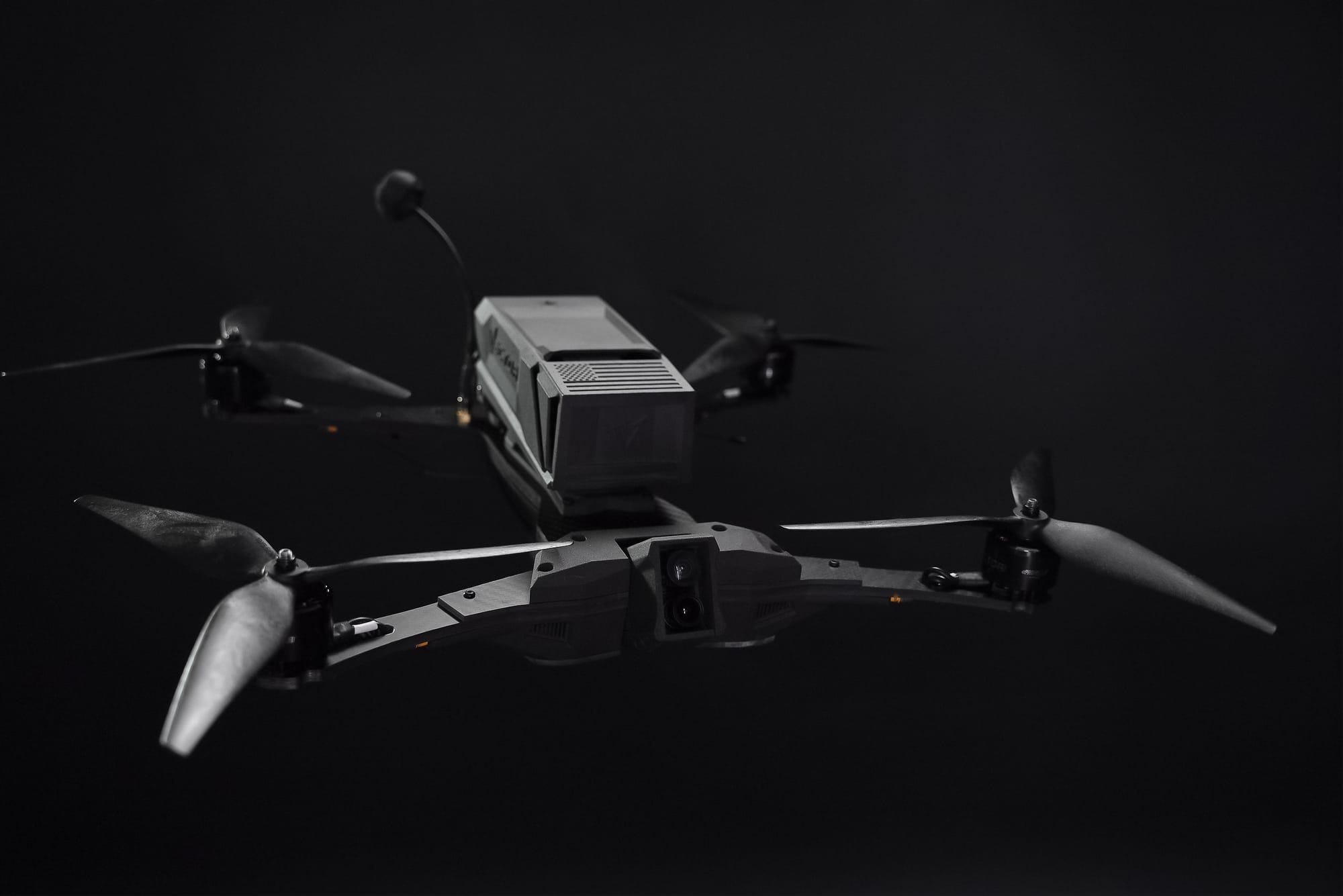
The company currently fields several drone platforms tailored to different missions:
- Hammer (10-inch propeller drone): Designed for outdoor, longer-range operations, capable of carrying munitions integrated by the military. Its fiber-optic cable control makes it immune to jamming. Yakulis said, “You could have a $50 million jammer trying to stop this drone, and it won’t work. There’s no radio frequency to jam.”
- Mace (5-inch propeller drone): Smaller and optimized for operations in confined areas, such as urban or forested environments, where agility and rapid maneuvering are essential.
- 3.5-inch propeller indoor drone: Specialized for internal clearance of buildings, allowing operators to conduct reconnaissance or tactical operations in enclosed spaces.
Note: The “inch” designation refers to the length of the drone propellers, not the overall size of the drone.
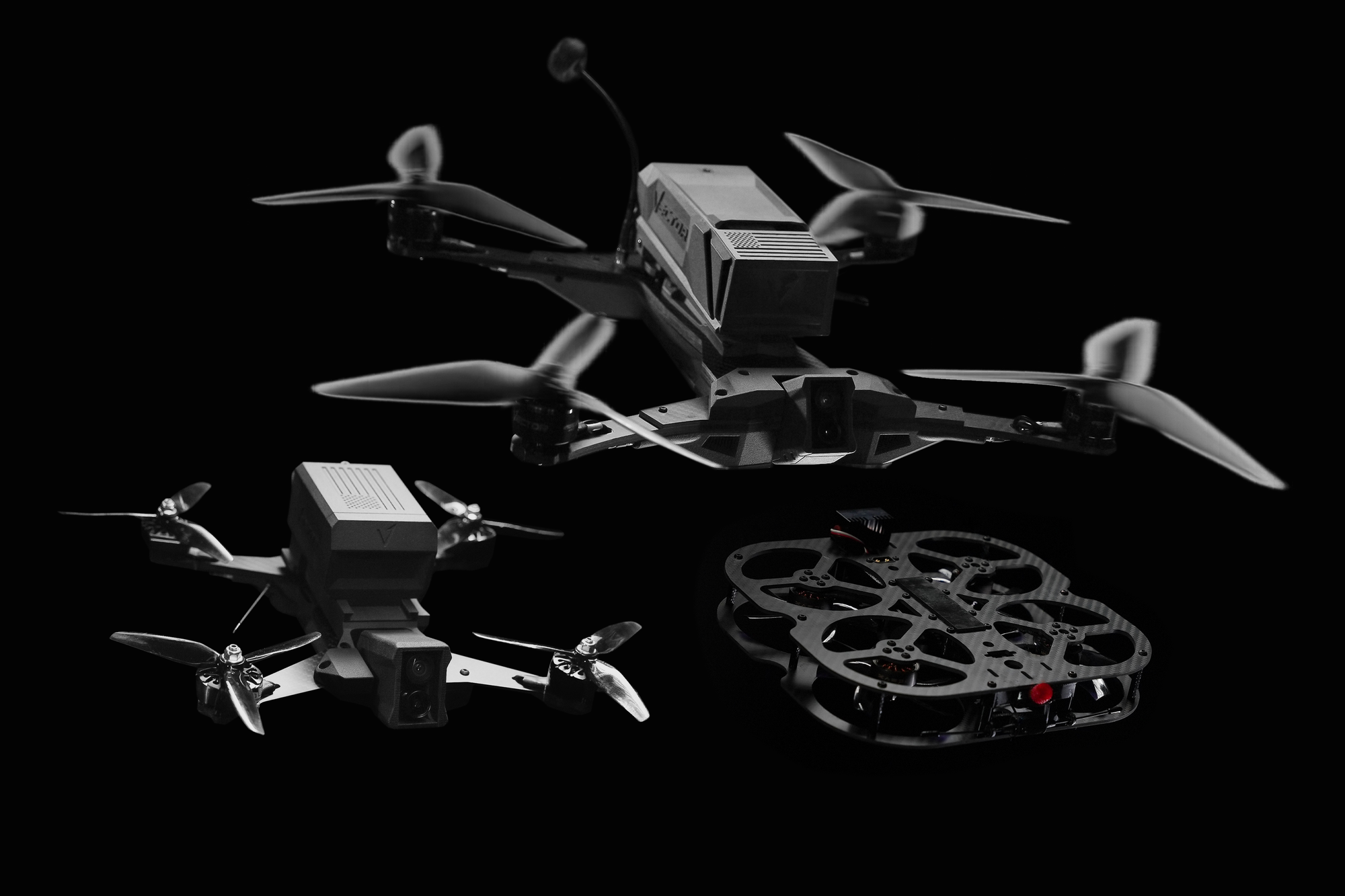
Yakulis emphasized that each drone is part of a broader, integrated service: Vector not only delivers kinetic capability but also provides tactical training, operational doctrine updates, and ongoing upgrades, ensuring warfighters are prepared for real-world combat scenarios. “We exist to make sure the military is trained and ready with both the products and the training to fight the next war,” he said.
Vector’s subscription contracts, including the SOCOM deal, are multi-year with a ceiling, allowing special operations units to order drones at intervals that fit operational needs. Yakulis noted: “A lot of incentive is put on us, which I think is a good thing, because it forces us to innovate and provide a better product from one contract cycle to the next.”
Innovation Spotlight: The Fiber-Optic Hammer
Vector recently became the first U.S. company to integrate fiber-optic control lines into a U.S.-made FPV drone — giving it immunity from electronic jamming. Each Hammer drone carries a 5,000-meter spool of fiber linking directly to its controller. Yakulis said: “You could have a $50 million jammer trying to stop this drone, and it won’t work. There’s no radio frequency to jam.”
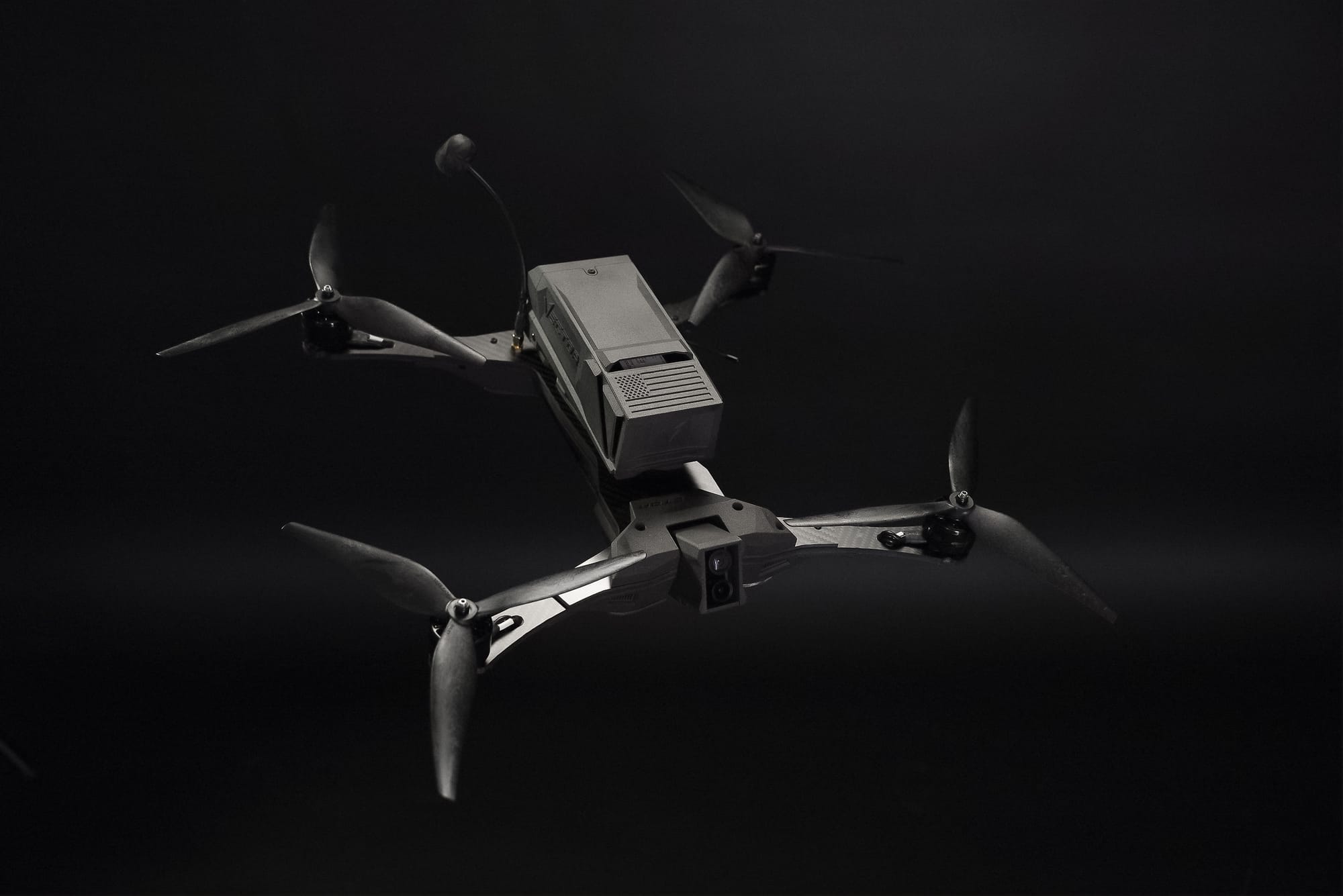
Utah Roots and 47G Involvement
Vector performs final assembly in Draper, Utah, with R&D operations in Austin, Texas, and a growing global footprint for tactical training and field development. All manufacturing is NDAA-compliant, with no foreign supply chain dependencies.
The company employs over 100 people, and Yakulis credits Utah’s defense ecosystem — and organizations like 47G — for their role in supporting startups and connecting innovators across the aerospace and defense sectors. “One of the first things I did when we established headquarters here was reach out to 47G,” he said. “The organization brings together founders, investors, and government partners in a way I hadn’t seen in Silicon Valley. Utah’s collaborative ecosystem is exactly what defense innovation needs — it allows companies like Vector to experiment, iterate, and scale faster while staying grounded in real-world operational requirements.”
Yakulis emphasized that 47G not only provides networking opportunities but also fosters cross-industry collaboration, mentorship, and strategic connections critical for defense startups tackling high-stakes problems. “The support here isn’t just about capital; it’s about access to people, expertise, and the right partnerships that accelerate both product development and deployment,” he said.
He will participate in a panel at the upcoming Zero Gravity Summit, where he will share insights on Vector’s “drone-as-a-service” model, lessons learned from modern battlefields, and strategies to rapidly adopt emerging defense technologies, highlighting how Utah’s ecosystem uniquely supports these efforts.
After a sold-out debut in 2024, the summit has scaled up for 2025, featuring keynote addresses from Jen Easterly, former head of CISA; Nikki Haley, former U.S. ambassador to the U.N. and governor of South Carolina; Dmytro Kushneruk, Consul General of Ukraine; Peyton Manning, NFL Hall of Famer and entrepreneur; Brad Wilson, CEO of Salt Lake City-Utah 2034 Olympic and Paralympic Games; and Israel Bachar, Consul General of Israel.
Topics will span geostrategic stressors, defense technology, dual-use innovation, air mobility, energy resilience, and the new space economy.
On the morning of November 4, Yakulis will be a part of the Zero Gravity Summit panel: “The New Battlespace: Autonomous Solutions & Drone Warfare," alongside Jon Gruen, CEO of Fortem Technologies, a Lindon, Utah-based provider of airspace security and counter-drone solutions, as previously covered by TechBuzz. Founded in 2016, Fortem is a developer of ultra-small, advanced solutions and strategies in C-UAS (counter-unmanned aerial systems), ISR (intelligence, reconnaissance, surveillance), perimeter security, and airspace safety systems that protect critical defense installations where drone threats are increasingly sophisticated and persistent.
Continuing Service, in a New Form
“I see this as a continuation of service,” Yakulis said. “Only now, instead of flying missions myself, I’m helping ensure the next generation of soldiers has the best tools available — when they need them.”
Learn more at tfvector.com.
Register for the November 4-5, 2025 Zero Gravity Summit at zerogravitysummit.com.
